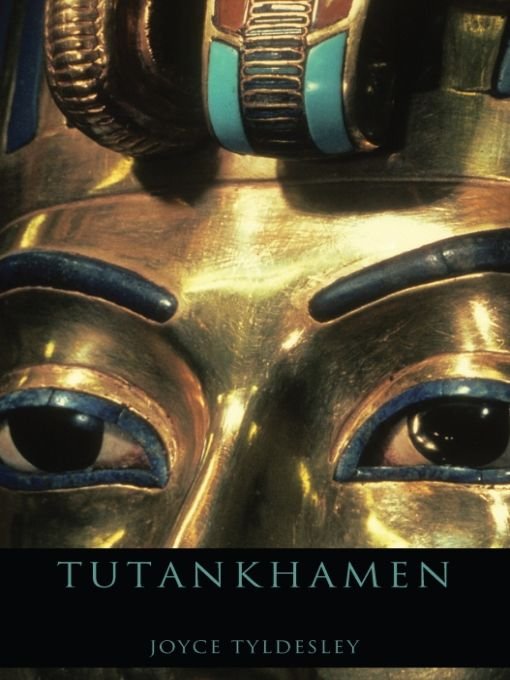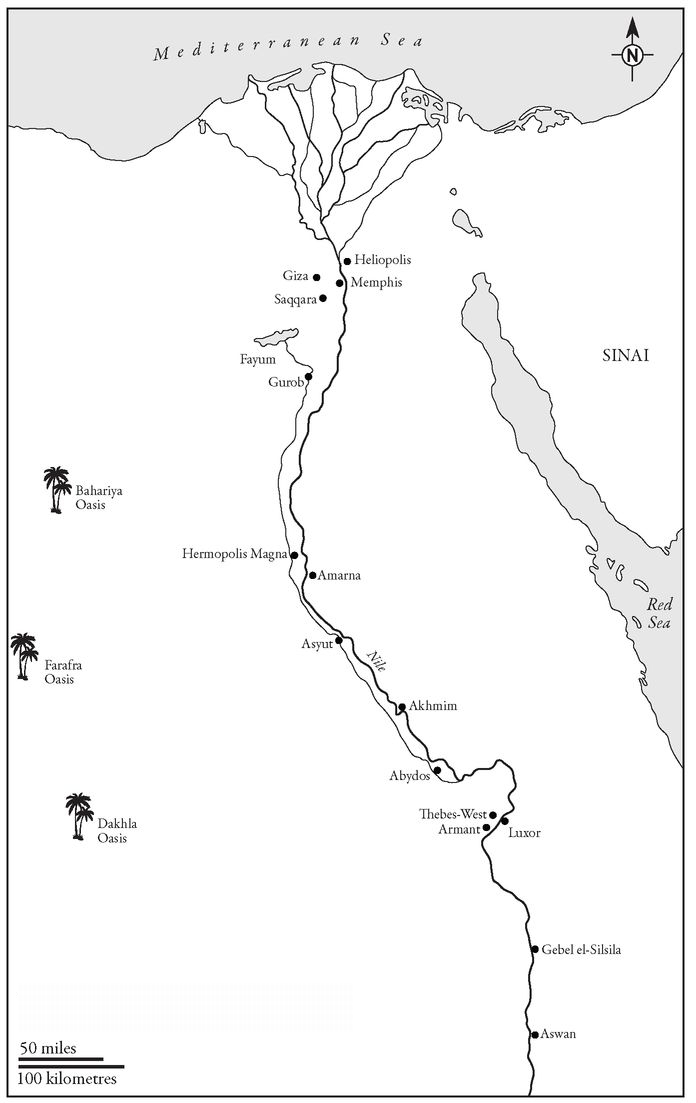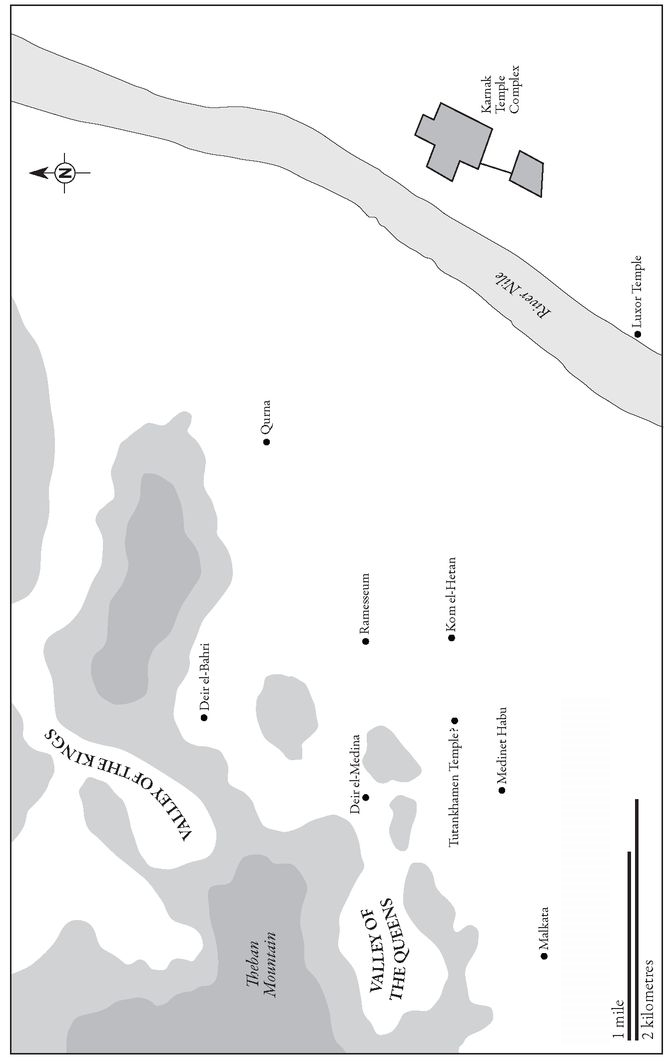Tutankhamen
Authors: Joyce Tyldesley


Table of Contents
Â
Â
Â
Â
ALSO BY JOYCE TYLDESLEY
Â
For Adults
Â
Daughters of Isis: Women of Ancient Egypt
Hatchepsut: the Female Pharaoh
Nefertiti: Egypt's Sun Queen
The Mummy
Ramesses: Egypt's Greatest Pharaoh
Judgement of the Pharaoh: Crime and Punishment in Ancient Egypt
The Private Lives of the Pharaohs
Egypt's Golden Empire
Pyramids: The Real Story Behind Egypt's Most Ancient Monuments
Tales from Ancient Egypt
Egypt: How a Lost Civilization was Rediscovered
Chronicle of the Queens of Egypt
Egyptian Games and Sports
Cleopatra: Last Queen of Egypt
The Pharaohs
Myths and Legends of Ancient Egypt
Hatchepsut: the Female Pharaoh
Nefertiti: Egypt's Sun Queen
The Mummy
Ramesses: Egypt's Greatest Pharaoh
Judgement of the Pharaoh: Crime and Punishment in Ancient Egypt
The Private Lives of the Pharaohs
Egypt's Golden Empire
Pyramids: The Real Story Behind Egypt's Most Ancient Monuments
Tales from Ancient Egypt
Egypt: How a Lost Civilization was Rediscovered
Chronicle of the Queens of Egypt
Egyptian Games and Sports
Cleopatra: Last Queen of Egypt
The Pharaohs
Myths and Legends of Ancient Egypt
Â
For Children
Â
Mummy Mysteries: The Secret World of Tutankhamun
and the Pharaohs
and the Pharaohs
Â
Egypt (Insiders)
Â
Stories from Ancient Egypt
Â
The Lost Scroll: a play for children
To the memory of Robert âBob' Partridge
(1951 â 2011)
(1951 â 2011)
Â
âMay your spirit live, may you spend millions of years,
you who love Thebes, sitting with your face to the north wind,
your eyes beholding happiness.'
you who love Thebes, sitting with your face to the north wind,
your eyes beholding happiness.'
ACKNOWLEDGEMENTS
Many people have contributed to the development of this book. I would like to acknowledge the particular help of Paul Bahn, Dylan Bickerstaffe, Victor Blunden, Audrey Carter, Robert Connolly, Steve Cross, Rosalie David, J. Fox-Davies, Robert Loynes, Jaromir Malek and the Griffith Institute, the late Bob Partridge, Bryan Sitch, Steven Snape and Angela Thomas. I would also like to express my thanks to the on-line Egyptology students of Manchester University, for their animated and always thought-provoking discussions.
At Profile Books I would like to thank my editor, the ever-patient Peter Carson, Penny Daniel and Annie Lee.
Â
TUTANKHAMEN'S EGYPT

Â
NEW KINGDOM THEBES

Â
VALLEY OF THE KINGS

A NOTE ON NAMES
The Egyptians omitted vowels from their hieroglyphic texts: like modern emailers and texters (txtrs), they saw no need to waste time, energy and space writing sounds â and sometimes even words â that would have been obvious to everyone. Lol.
Unfortunately, ancient Egyptian is now a long-dead language, and the missing sounds are far from obvious to modern readers. Egyptologists therefore have to guess which vowel goes where. Generally, we insert âe' as the vowel of choice, but this may not be the vowel that the Egyptians used, and we might not insert it in the correct place. As a result, all but the shortest Egyptian words have several variant English spellings, all equally acceptable. Throughout this book I use the spelling Tutankhamen, and I refer to Tutankhamen's god as Amen. In so doing, I follow the precedent set by Howard Carter. I have taken the liberty of extending this preferred spelling to all quotes within the text. Others prefer the spelling Tutankhamun (and Amun) or Tut-ankhamon (Amon); more exotic variants â Touatânkhamanou, Tut.ankh.Amen, Tutenchamun, etc. â will be found in the older literature. All refer to the same man.
The king that we know as Tutankhamen (living image of [the god] Amen) was born Tutankhaten (living image of [the god] Aten) but changed his name during the first few years of his reign. His consort,
Ankhesenpaaten, became Ankhesenamen at the same time. Others had already changed their names. The king that we today know as Akhenaten was originally Amenhotep IV; Akhenaten's consort, Nefertiti at the time of her marriage, expanded her name early in her husband's reign to become Neferneferuaten Nefertiti. To avoid unnecessary complications I will refer to these individuals as Tutankhamen, Akhenaten, Nefertiti and Ankhesenamen throughout the text, unless it is inappropriate so do.
Ankhesenpaaten, became Ankhesenamen at the same time. Others had already changed their names. The king that we today know as Akhenaten was originally Amenhotep IV; Akhenaten's consort, Nefertiti at the time of her marriage, expanded her name early in her husband's reign to become Neferneferuaten Nefertiti. To avoid unnecessary complications I will refer to these individuals as Tutankhamen, Akhenaten, Nefertiti and Ankhesenamen throughout the text, unless it is inappropriate so do.
At his coronation Tutankhamen assumed a series of five names that served as a formal statement of intent or propaganda for his reign. His last two names, known today as the prenomen and the nomen, are the names that are given in cartouches (distinctive oval loops) on his monuments and inscriptions. His prenomen (Nebkheperure) is the name by which his people knew him:
Horus Name: Image of births
Two Ladies Name: Beautiful of laws who quells the Two Lands/ who makes content all the gods
Golden Horus Name: Elevated of appearances for the god/his father Re
Prenomen: Nebkheperure: Lord of manifestations of [the god] Re
Nomen: Tutankhamen: Living image of [the god] Amen
A NOTE ON DATES
Egypt's dynastic age started with the unification of the country by the southern warrior Narmer in approximately 3100 BC, and ended just over 3,000 years later with the suicide of Cleopatra VII in 30 BC. Following the scheme devised by the Ptolemaic historian Manetho, Egyptologists divide this dynastic age into âdynasties': lines of kings who are in some way linked together. They may be, but are not always, blood relations. It is important to remember that these dynasties are artificial, modern divisions; the ancients did not divide up their history in this way.
The dynasties are grouped into times of strong, centralised rule (the Old, Middle and New Kingdoms and the Late Period) separated by periods of decentralised or foreign control (the First, Second and Third Intermediate Periods). Tutankhamen ruled during the late 18th Dynasty, the first dynasty of the New Kingdom (Dynasties 18 â 20,
c.
1550 â 1069 BC).
c.
1550 â 1069 BC).
The Egyptians dated events by reference to the current king's reign: Year 1, Year 2, Year 3, etc. When the old king died and a new king took his place, the dating system began again with a new Year 1. Although this is by no means a perfect system, it is the most accurate means that we have of dating Egypt's past, and it is the system that will be used throughout this book.
It is notoriously difficult to tie the Egyptian regnal dates into our modern calendar. As there is no universally accepted chronology the following, based on the dates suggested by Ian Shaw in the
Oxford History of Ancient Egypt
(2000: 481), is used:
Oxford History of Ancient Egypt
(2000: 481), is used:
Kings of the 18th Dynasty (
c
. 1550 â 1295 BC)
Ahmose
c.
1550 â 1525 BC
Amenhotep I
c.
1525 â 1504 BC
Tuthmosis I
c.
1504 â 1492 BC
Tuthmosis II
c.
1492 â 1479 BC
Tuthmosis III
c.
1479 â 1425 BC
Hatshepsut
c.
1473 â 1458 BC
Amenhotep II
c.
1427 â 1400 BC
Tuthmosis IV
c.
1400 â 1390 BC
Amenhotep III
c.
1390 â 1352 BC
Amenhotep IV/Akhenaten
c.
1352 â 1336 BC
Smenkhkare
c.
1338 â 1336 BC
Tutankhamen
c.
1336 â 1327 BC
Ay
c.
1327 â 1323 BC
Horemheb
c.
1323 â 1295 BC
c
. 1550 â 1295 BC)
Ahmose
c.
1550 â 1525 BC
Amenhotep I
c.
1525 â 1504 BC
Tuthmosis I
c.
1504 â 1492 BC
Tuthmosis II
c.
1492 â 1479 BC
Tuthmosis III
c.
1479 â 1425 BC
Hatshepsut
c.
1473 â 1458 BC
Amenhotep II
c.
1427 â 1400 BC
Tuthmosis IV
c.
1400 â 1390 BC
Amenhotep III
c.
1390 â 1352 BC
Amenhotep IV/Akhenaten
c.
1352 â 1336 BC
Smenkhkare
c.
1338 â 1336 BC
Tutankhamen
c.
1336 â 1327 BC
Ay
c.
1327 â 1323 BC
Horemheb
c.
1323 â 1295 BC
Other books
Back to the Moon-ARC by Travis S. Taylor, Les Johnson
Love and Fear by Reed Farrel Coleman
Tangled Threads by Margaret Dickinson
Shadow Stations: Unseen by Grant, Ann
Sins of a Wicked Duke by Sophie Jordan
Kiss and Tell by Cherry Adair
No Will But His by Hoyt, Sarah A.
A Necessary End by Peter Robinson
Wicked War of Mine (Overworld Chronicles Book 9) by John Corwin
No Story to Tell by K. J. Steele